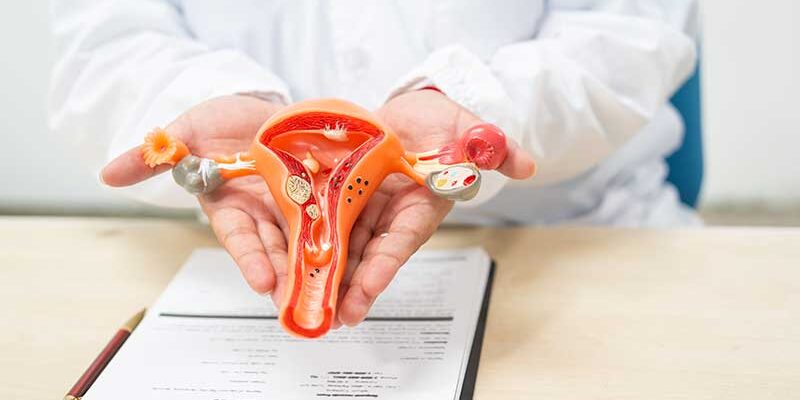Uterine fibroids, also known as leiomyomas or myomas, are non-cancerous uterine growths that typically arise during the reproductive years. While the specific etiology of uterine fibroids is unknown, they are commonly associated with hormonal and genetic predispositions. Understanding your diagnosis and looking into different treatment choices can help you manage your symptoms and improve your quality of life.
Diagnosis of uterine fibroids
The process of diagnosing uterine fibroids often begins with the recognition of symptoms. Heavy menstrual blood, lengthy periods, pelvic pressure or pain, frequent urination, trouble emptying the bladder, constipation, and back or leg pain are all common symptoms. However, it is crucial to note that some women with fibroids have no symptoms at all.
Healthcare providers may utilize many approaches to diagnose fibroids
- Pelvic examination: This can detect irregularities in the shape of the uterus, which may indicate the presence of fibroids.
- Ultrasound is the most often used approach for confirming a diagnosis; it creates images of the uterus and identifies fibroids.
- Magnetic Resonance Imaging (MRI): This imaging test can assess the size and location of fibroids, assisting in treatment planning.
- Hysterosonography: The use of saline to expand the uterine cavity allows for easier imaging of the uterine cavity and endometrium.
Management of uterine fibroids
Management techniques for uterine fibroids differ based on the severity of the symptoms, the size of the fibroid, its location, and your reproductive goals. Women with moderate symptoms may not require prompt treatment. Here are some common approaches:
- Watchful Waiting: Most fibroids are asymptomatic and do not require treatment. Regular monitoring may be all that is necessary.
- Medications: Certain medications can alleviate symptoms but do not eradicate fibroids. This includes:
- Gonadotropin releasing hormone (GnRH) agonists: Reduce hormone production and frequently reduce fibroids.
- A progestin-releasing intrauterine device (IUD) can alleviate excessive bleeding caused by fibroids.
- Tranexamic acid is a non-hormonal drug that can help regulate heavy menstrual bleeding.
Treatment Alternatives for Uterine Fibroids
When symptoms are severe or if fibroids interfere with fertility, more aggressive therapy may be required.
- Uterine Fibroid Embolization (UFE) is a minimally invasive surgery that reduces the blood supply to fibroids, causing them to shrink.
- Myomectomy is a surgical technique that removes fibroids while preserving the uterus and is frequently advised for women who want to conceive.
- Hysterectomy: Removal of the uterus; a final option when previous therapies have failed or are ineffective.
Lifestyle Changes and Holistic Approaches
In addition to medication therapies, lifestyle adjustments may assist manage symptoms:
- Dietary Changes: Limiting red meat and increasing green vegetables may help reduce fibroid symptoms.
- Exercise: Regular physical exercise can help to alleviate discomfort.
- Stress Management: Yoga, meditation, and mindfulness can help reduce stress, which can increase fibroid symptoms.
Navigating life with uterine fibroids can be difficult, but with the correct information and support, you can successfully manage your disease. Always consult with your healthcare practitioner to determine the best management and treatment strategy for your specific requirements. As knowledge advances, new treatments emerge, giving women with fibroids hope and better outcomes.
Please visit us new location
Ridgecrest
1535 China Lake Suite C
Ridgecrest, CA.93555
Phone: 760-946-2243
Hours: 9-5 Thursdays





